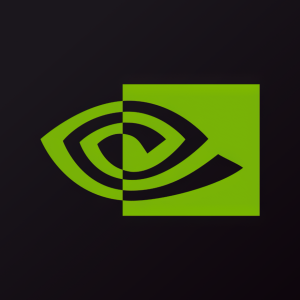NVIDIA Accelerates Humanoid Robotics Development
Rhea-AI Summary
NVIDIA has announced a suite of services, models, and computing platforms to accelerate humanoid robotics development globally. Key offerings include:
1. New NVIDIA NIM microservices for robot simulation and learning, including MimicGen for synthetic motion data generation and Robocasa for task and environment generation.
2. NVIDIA OSMO, a cloud-native service for orchestrating complex robotics workflows.
3. An AI- and Omniverse-enabled teleoperation workflow for efficient data capture and synthetic data generation.
4. Access to NVIDIA AI supercomputers, Isaac Sim, and Jetson Thor humanoid robot computers.
5. The NVIDIA Humanoid Robot Developer Program for early access to these technologies.
These initiatives aim to simplify and accelerate humanoid robot development, reducing deployment times and costs for developers worldwide.
Positive
- Introduction of NVIDIA NIM microservices for enhanced robotics simulation workflows
- Launch of NVIDIA OSMO cloud-native service for efficient robotics workflow orchestration
- Development of AI-enabled teleoperation workflow for cost-effective data capture and synthetic data generation
- Establishment of NVIDIA Humanoid Robot Developer Program for early access to new technologies
- Potential to significantly reduce deployment and development cycle times for robotics projects
Negative
- None.
News Market Reaction 1 Alert
On the day this news was published, NVDA declined 7.04%, reflecting a notable negative market reaction.
Data tracked by StockTitan Argus on the day of publication.
Developers Gain Access to New NVIDIA NIM Microservices for Robotics Simulation in Isaac Lab and Isaac Sim, OSMO Robot Cloud Compute Orchestration Service, Teleoperated Data Capture Workflow and More
DENVER, July 29, 2024 (GLOBE NEWSWIRE) -- SIGGRAPH—To accelerate humanoid development on a global scale, NVIDIA today announced it is providing the world’s leading robot manufacturers, AI model developers and software makers with a suite of services, models and computing platforms to develop, train and build the next generation of humanoid robotics.
Among the offerings are new NVIDIA NIM™ microservices and frameworks for robot simulation and learning, the NVIDIA OSMO orchestration service for running multi-stage robotics workloads, and an AI- and simulation-enabled teleoperation workflow that allows developers to train robots using small amounts of human demonstration data.
“The next wave of AI is robotics and one of the most exciting developments is humanoid robots,” said Jensen Huang, founder and CEO of NVIDIA. “We’re advancing the entire NVIDIA robotics stack, opening access for worldwide humanoid developers and companies to use the platforms, acceleration libraries and AI models best suited for their needs.”
Accelerating Development With NVIDIA NIM and OSMO
NIM microservices provide pre-built containers, powered by NVIDIA inference software, that enable developers to reduce deployment times from weeks to minutes. Two new AI microservices will allow roboticists to enhance simulation workflows for generative physical AI in NVIDIA Isaac Sim™, a reference application for robotics simulation built on the NVIDIA Omniverse™ platform.
The MimicGen NIM microservice generates synthetic motion data based on recorded teleoperated data from spatial computing devices like Apple Vision Pro. The Robocasa NIM microservice generates robot tasks and simulation-ready environments in OpenUSD, a universal framework for developing and collaborating within 3D worlds.
NVIDIA OSMO, available now, is a cloud-native managed service that allows users to orchestrate and scale complex robotics development workflows across distributed computing resources, whether on premises or in the cloud.
OSMO vastly simplifies robot training and simulation workflows, cutting deployment and development cycle times from months to under a week. Users can visualize and manage a range of tasks — like generating synthetic data, training models, conducting reinforcement learning and implementing software-in-the-loop testing at scale for humanoids, autonomous mobile robots and industrial manipulators.
Advancing Data Capture Workflows for Humanoid Robot Developers
Training foundation models for humanoid robots requires an incredible amount of data. One way of capturing human demonstration data is using teleoperation, but this is becoming an increasingly expensive and lengthy process.
An NVIDIA AI- and Omniverse-enabled teleoperation reference workflow, demonstrated at the SIGGRAPH computer graphics conference, allows researchers and AI developers to generate massive amounts of synthetic motion and perception data from a minimal amount of remotely captured human demonstrations.
First, developers use Apple Vision Pro to capture a small number of teleoperated demonstrations. Then, they simulate the recordings in NVIDIA Isaac Sim and use the MimicGen NIM microservice to generate synthetic datasets from the recordings.
The developers train the Project GR00T humanoid foundation model with real and synthetic data, enabling developers to save time and reduce costs. They then use the Robocasa NIM microservice in Isaac Lab, a framework for robot learning, to generate experiences to retrain the robot model. Throughout the workflow, NVIDIA OSMO seamlessly assigns computing jobs to different resources, saving the developers weeks of administrative tasks.
Fourier, a general-purpose robot platform company, sees the benefit of using simulation technology to synthetically generate training data.
“Developing humanoid robots is extremely complex — requiring an incredible amount of real data, tediously captured from the real world,” said Alex Gu, CEO of Fourier. “NVIDIA’s new simulation and generative AI developer tools will help bootstrap and accelerate our model development workflows.”
Expanding Access to NVIDIA Humanoid Developer Technologies
NVIDIA provides three computing platforms to ease humanoid robotics development: NVIDIA AI supercomputers to train the models; NVIDIA Isaac Sim built on Omniverse, where robots can learn and refine their skills in simulated worlds; and NVIDIA Jetson™ Thor humanoid robot computers to run the models. Developers can access and use all — or any part of — the platforms for their specific needs.
Through a new NVIDIA Humanoid Robot Developer Program, developers can gain early access to the new offerings as well as the latest releases of NVIDIA Isaac Sim, NVIDIA Isaac Lab, Jetson Thor and Project GR00T general-purpose humanoid foundation models.
1x, Boston Dynamics, ByteDance Research, Field AI, Figure, Fourier, Galbot, LimX Dynamics, Mentee, Neura Robotics, RobotEra and Skild AI are among the first to join the early-access program.
“Boston Dynamics and NVIDIA have a long history of close collaboration to push the boundaries of what’s possible in robotics,” said Aaron Saunders, chief technology officer of Boston Dynamics. “We’re really excited to see the fruits of this work accelerating the industry at large, and the early-access program is a fantastic way to access best-in-class technology.”
Availability
Developers can join the NVIDIA Humanoid Robot Developer Program now to get access to NVIDIA OSMO and Isaac Lab, and will soon gain access to NVIDIA NIM microservices.
Learn more about the latest in generative AI and accelerated computing by tuning in to Huang’s fireside chats at SIGGRAPH, the premier computer graphics conference, running through Aug. 1 in Denver.
About NVIDIA
NVIDIA (NASDAQ: NVDA) is the world leader in accelerated computing.
For further information, contact:
David Pinto
Corporate Communications
NVIDIA Corporation
dpinto@nvidia.com
Certain statements in this press release including, but not limited to, statements as to: the benefits, impact, performance, features, and availability of NVIDIA’s products and technologies, including NVIDIA NIM microservices, NVIDIA OSMO, NVIDIA Isaac Sim, NVIDIA Isaac Lab, MimicGen NIM, Robocasa NIM, NVIDIA Omniverse, Project GR00T humanoid foundation model, NVIDIA Jetson Thor and NVIDIA Humanoid Robot Developer Program; third parties using or adopting NVIDIA products, technologies and platforms, and the benefits and impacts thereof; our collaboration with third parties and the benefits and impacts thereof; the next wave of AI being robotics and one of the most exciting developments being humanoid robots; NVIDIA advancing the entire NVIDIA robotics stack, opening access for worldwide humanoid developers and companies to use the platforms, acceleration libraries and AI models best suited for their needs; and the timing, participants, availability and impact of SIGGRAPH are forward-looking statements that are subject to risks and uncertainties that could cause results to be materially different than expectations. Important factors that could cause actual results to differ materially include: global economic conditions; our reliance on third parties to manufacture, assemble, package and test our products; the impact of technological development and competition; development of new products and technologies or enhancements to our existing product and technologies; market acceptance of our products or our partners' products; design, manufacturing or software defects; changes in consumer preferences or demands; changes in industry standards and interfaces; unexpected loss of performance of our products or technologies when integrated into systems; as well as other factors detailed from time to time in the most recent reports NVIDIA files with the Securities and Exchange Commission, or SEC, including, but not limited to, its annual report on Form 10-K and quarterly reports on Form 10-Q. Copies of reports filed with the SEC are posted on the company's website and are available from NVIDIA without charge. These forward-looking statements are not guarantees of future performance and speak only as of the date hereof, and, except as required by law, NVIDIA disclaims any obligation to update these forward-looking statements to reflect future events or circumstances.
Many of the products and features described herein remain in various stages and will be offered on a when-and-if-available basis. The statements hereto are not intended to be, and should not be interpreted as a commitment, promise, or legal obligation, and the development, release, and timing of any features or functionalities described for our products is subject to change and remains at the sole discretion of NVIDIA. NVIDIA will have no liability for failure to deliver or delay in the delivery of any of the products, features or functions set forth herein.
© 2024 NVIDIA Corporation. All rights reserved. NVIDIA, the NVIDIA logo, NVIDIA Isaac, NVIDIA Isaac Sim, NVIDIA NIM and NVIDIA Omniverse are trademarks and/or registered trademarks of NVIDIA Corporation in the U.S. and other countries. Other company and product names may be trademarks of the respective companies with which they are associated. Features, pricing, availability and specifications are subject to change without notice.
A photo accompanying this announcement is available at https://www.globenewswire.com/NewsRoom/AttachmentNg/d568c1c1-7b32-48de-922b-bfd22bd567fc










